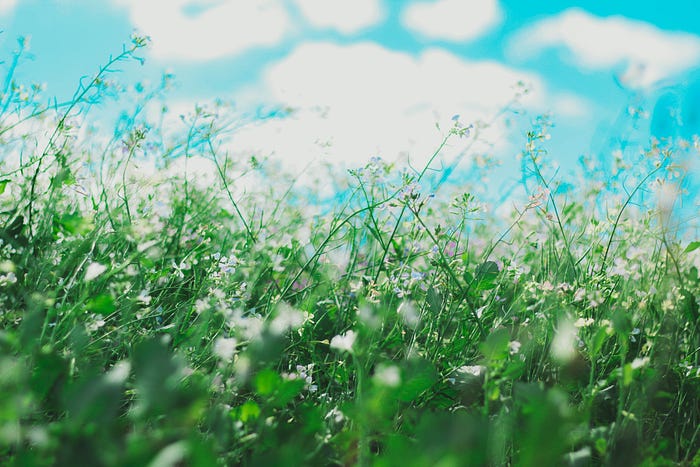

Is Allergy Season Getting Worse Every Year?
source link: https://lindaddahl.medium.com/is-allergy-season-getting-worse-every-year-18d9d5b70267
Go to the source link to view the article. You can view the picture content, updated content and better typesetting reading experience. If the link is broken, please click the button below to view the snapshot at that time.
Is Allergy Season Getting Worse Every Year?

Photo: Allef Vinicius / Unsplash
Every spring, the news outlets seem to recycle the same message: This is the worst allergy season on record. At first glance, the headlines may seem dramatic. But, according to the Asthma and Allergy Foundation, they are actually true. In the last year, 19.2 million adults and 5.2 million children in the United States suffered from hay fever. Allergy season is getting worse every year. And the reasons why may surprise you.
Before delving in, let’s first consider the types of environmental allergies and what causes them. Environmental allergy symptoms happen when we breathe in particles that trigger an allergic reaction in our eyes, noses, throats, and lungs. Those reactions can result in sneezing; nasal congestion and drip; watery, itchy eyes; sore throat; and asthma. Environmental allergies can be divided into groups like indoor, outdoor, seasonal, and year-round. The most common causes of year-round allergies are mold spores, dust mites, cockroaches, cat and dog dander, and rodent urine — allergens that are present indoors and out.
Seasonal allergies, those that flare up in the fall and spring, are caused by weed pollen, tree pollen, and grass pollen. Seasonal allergies are mostly outdoor, but pets and shoes can track those allergens inside too.
When considering seasonal allergies, pollen is the main culprit. Pollen is the dust or tiny seeds produced by the male parts of flowering trees, plants, and grasses. Because these plants can’t move on their own, they rely on wind, water, and insects to carry their seeds to females. In other words, pollen is how baby trees and plants are made. Amazingly, the outer layer of each pollen grain is very resistant to damage, remaining intact despite intense heat, chemicals, or other exposures. Pollen is only produced during certain times of the year, called growing seasons. Trees usually begin producing pollen in January, this peaks in early spring and stops in June. Grass pollen usually peaks in late spring or early summer in northern states, but it can be year-round in the south. Weed pollen is produced in late summer and fall in all states, but mostly in the east and midwest.
So, why is allergy season getting worse every year? The main reason is climate change. Warmer air temperatures and shifts in precipitation patterns are making growing seasons longer. This means trees and plants make more pollen for longer periods of time. A recent study showed that North America’s pollen season in 2018 was already 20 days longer than it was in 1990. Carbon dioxide emissions, another consequence of climate change, causes even more of an impact. Carbon dioxide drives photosynthesis, helping trees and plants grow larger and produce even more pollen.
Another potential culprit is something called Botanical Sexism. Although its existence is debated, the theory goes like this. Tree specialists often recommend male plants in urban areas because they don’t shed messy seeds, pods, or fruits. What they do shed is pollen. Without nearby female trees to “catch” the pollen, it is free to fly through the air and up our noses.
Wholesale and commercial tree growers have created clonal males never before seen in nature, such as seedless Cyprus, shrubs, and junipers. They even made all-male hanging plants. In urban areas, this means we have an overabundance of male trees making an overabundance of pollen. While pollen does blow around, most of it lands within 20–30 feet of its source. Urban landscape design has therefore inadvertently created an epidemic of allergies and asthma in our cities.
And finally, there is Vitamin D deficiency to consider.
Vitamin D can come through your diet, from foods such as fortified dairy products and cereals, but is primarily produced when your skin is exposed to sunlight. Vitamin D works as a hormone in the body and has many functions, one of which is preventing allergy and asthma symptoms. Vitamin D deficiency, which happens in 42% of the US population, can therefore worsen allergies. Some populations, like perimenopausal women, people over 65, those who avoid the sun, those who take heartburn medicine, those who have gut absorption issues, or kidney or liver disease, have even higher rates of Vitamin D deficiency. People with darker skin are particularly at risk because melanin reduces the skin’s ability to make Vitamin D from sunlight. In colder climates, after a long, dark winter, the majority of people have some degree of Vitamin D deficiency, which makes their reaction to an overdose of spring pollen even worse.
While allergies are getting worse every year, there are some strategies you can use to prepare and protect yourself. Stay tuned for my next article to find out what you can do about it.
Recommend
About Joyk
Aggregate valuable and interesting links.
Joyk means Joy of geeK